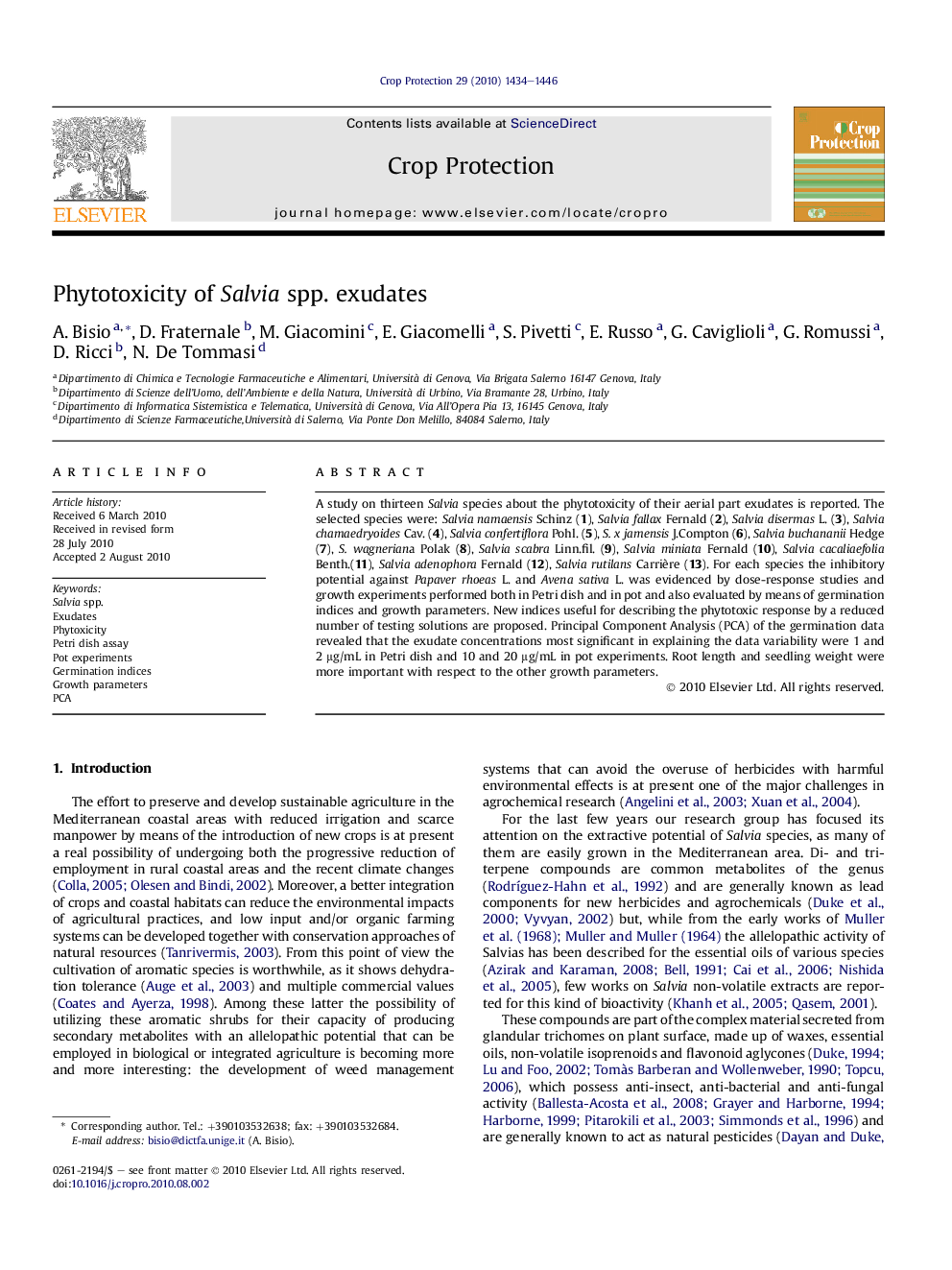| کد مقاله | کد نشریه | سال انتشار | مقاله انگلیسی | نسخه تمام متن |
|---|---|---|---|---|
| 4506820 | 1321331 | 2010 | 13 صفحه PDF | دانلود رایگان |

A study on thirteen Salvia species about the phytotoxicity of their aerial part exudates is reported. The selected species were: Salvia namaensis Schinz (1), Salvia fallax Fernald (2), Salvia disermas L. (3), Salvia chamaedryoides Cav. (4), Salvia confertiflora Pohl. (5), S. x jamensis J.Compton (6), Salvia buchananii Hedge (7), S. wagneriana Polak (8), Salvia scabra Linn.fil. (9), Salvia miniata Fernald (10), Salvia cacaliaefolia Benth.(11), Salvia adenophora Fernald (12), Salvia rutilans Carrière (13). For each species the inhibitory potential against Papaver rhoeas L. and Avena sativa L. was evidenced by dose-response studies and growth experiments performed both in Petri dish and in pot and also evaluated by means of germination indices and growth parameters. New indices useful for describing the phytotoxic response by a reduced number of testing solutions are proposed. Principal Component Analysis (PCA) of the germination data revealed that the exudate concentrations most significant in explaining the data variability were 1 and 2 μg/mL in Petri dish and 10 and 20 μg/mL in pot experiments. Root length and seedling weight were more important with respect to the other growth parameters.
Research highlights
► The paper reports about the phytotoxicity of the aerial part exudates of thirteen species of Salvia. For each species the inhibitory potential against P. rhoeas L. and A. sativa L. has been evidenced by dose-response studies and growth experiments performed both in Petri dish and in pot and also evaluated by means of germination indices and growth parameters. Moreover, new indices useful for describing the phytotoxic response by a reduced number of testing solutions have been proposed. Principal Component Analysis (PCA) of the germination data has revealed the most significant exudate concentrations in explaining the data variability, as well as the more important growth parameters.
► Within this work, some differences between the various Salvia species have been singled out. Nevertheless, various species presented intermediate outcomes. The techniques used in this paper yielded indications of possible differences, but these were not always evidenced by the diverse approaches used.
► For these reasons, further analysis based on the artificial neural network approach have been planned, as this approach can be very valuable in scenarios where a great amount of quantitative data are used to yield evidence based conclusion.
Journal: Crop Protection - Volume 29, Issue 12, December 2010, Pages 1434–1446